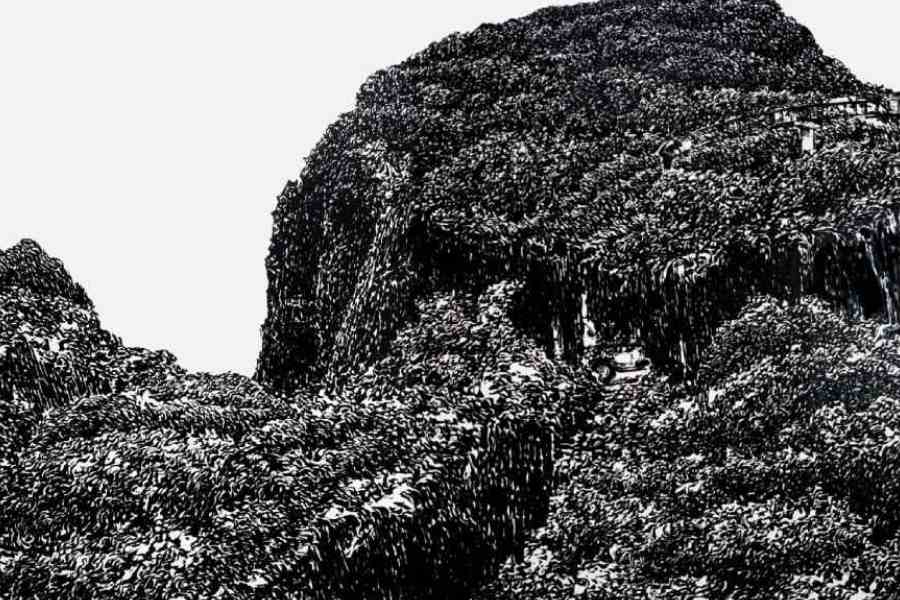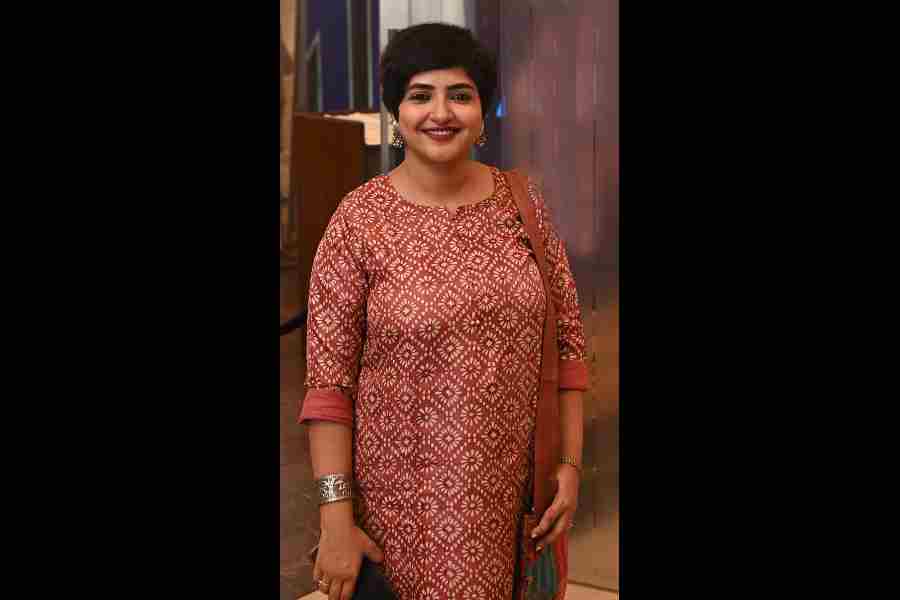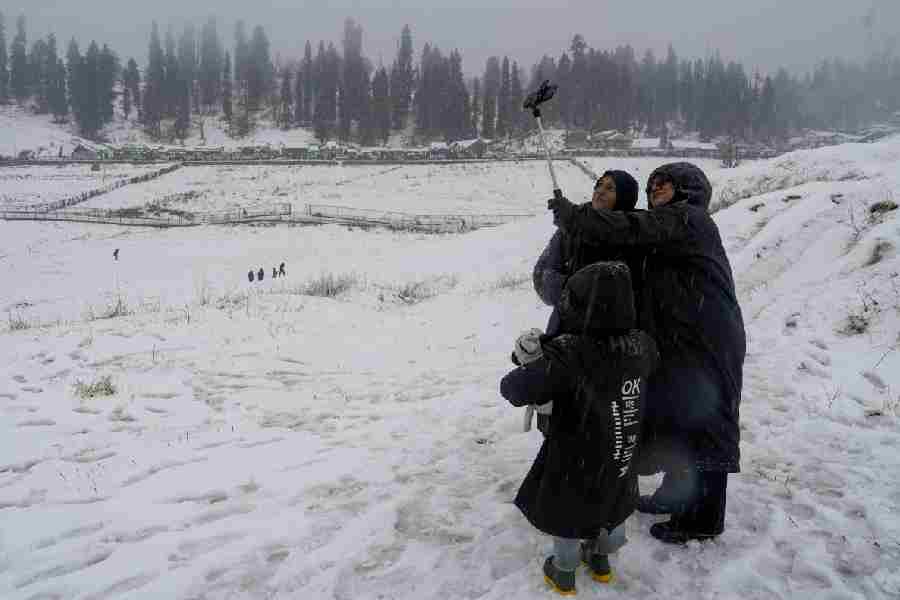In keeping with its title, Svikriti, the recent exhibition held at the Birla Academy of Art & Culture, acknowledged and valorised the talents and the diverse practices of the 11 artists who were BAAC Award winners of 2024-25. The young artists used varied
media to give tangible shape to their ideas, which required a hands-on approach with a wide range of material. The exhibition was curated by Uma Ray. The catalogue — a rarity in a post-Covid world — is well-produced.
The Seed, a kinetic installation that required the setting up of an intricate framework of a spare architectural design that shifted gear from time to time, was a fascinating and meditative work of fleeting shadows and half lights. Suggesting a fluid state of being, this piece by Sanjib Barui was squeezed into one corner of the exhibition space and demanded a better display. Barui’s second mixed-media work, Incognito, was a collage of geometric forms.
Soham Chakraborty’s untitled works, too, used geometry as their base but the effect was quite different. These woodcuts had the convolution of jigsaw puzzles. The complex works required a high degree of skill in their execution, but they ended up looking like they were unhinged clockwork watches — an apt metaphor for flux and transformation.
Bikram Dey’s works, in intriguing grey-brown tones, looked deceptively simple like children’s comic books, but they played around with the idea of control. His video on manipulation was remarkable. Interestingly, he used, quite appropriately, the alternative photographic process of gum bichromate for a series of nostalgic images.
Photography was the medium of choice of another award winner, Pritam Sarkar. He documented the Gajon festivals of rural Kandi and Kurmun in West Bengal and the sanyasis who participate in them. Some of the black-and-white frames were haunting, the one of the old women with the sanyasis and of a face viewed through a window, particularly so.
The only participant to present drawings was Sayandeep Kangsabanik who wields pen and ink with great panache. His metaphor of garbage dumps swallowing up entire landscapes to show the glut of information that we are being fed relentlessly could not have been more apposite (picture). He had created billboard-sized, intricately drawn images with telling details.
Shilpa Chakraborty, too, explored the idea of how discarded objects lying in a heap for a long time become defamiliarised through her unusual sculptures and images. For her sculpture, Constructed — X, she used silicone and fibre-reinforced plastic, giving it a rugged, weather-beaten look.
Tactility played a pivotal role in the works of all the women award-winners. Falguni Rawat made delicate drawings similar to embroidery with found objects such as dried sunflowers. She used cotton and graphite ink as well to create her works on cloth. Using etched copper plate, copper wire, jute and resin, Deepanwita Das made a similar statement on transformation.
The “fragility of our changing landscapes and its impact on human existence” was sensitively explored by Gopa Roy. Her works, made with straw and paper pulp, natural fibres and ink, curiously resembled termite mounds. The craggy texture she created was quite fabulous. Sriparna Dutta’s embroidered works were technically sound but the themes have become quite threadbare with overuse. It would be interesting to keep track of the future endeavours of these artists.










